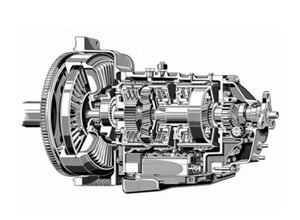There are quite a few opinions as to who created and sold the first workable automatic transmission. Most historians credit General Motors, however, with being first with their Hydramatic automatic transmission which appeared in select Oldsmobile models in 1939. By 1941, automatic transmissions were available on virtually all GM models.
Compared to now, the early automatic transmissions were much simpler. Most had four forward gears and reverse. The first automatic transmissions were different in other ways also. For example, the first generation Hydramatics did not have a “park” setting. What drivers did was shut off the engine and then switched the transmission into reverse to lock it.
Although the first automatic, GM’s Hydramatic, was a 4-speed, subsequent automatic transmissions were released by all the major automobile manufacturers in just 2 and 3 speed versions. This was not for long, though, because when gas mileage became more important, the major manufacturers increased the number of gears in their transmissions. A wider range of gear ratios allows a car’s engine to operate in a more optimum power band with increased efficiency and better acceleration.
Another innovation in automatic transmission design involved the semi-automatic. Deery Brothers (view their new inventory in IA) explains that this is a transmission with the internal components of an automatic but with two distinct modes of operation. One mode allows the driver to “shift” the gears like a standard transmission and the second does it for the driver like standard automatics do. Some say semi-automatics transmissions are the best of both worlds although the “standard mode” does not offer quite the fuel economy of a standard gearset tranmission.
Many of today’s cars offer Continuously Variable Transmissions (CVT). CVT refers to the fact that the transmissions have continuous gear ratios. In other words, there are no standard gearsets used at all. There are a number of different designs for CVTs with the most common design employing a pulley system driven by either belts or metal chains to achieve infinite variability between gears. Interestingly, the CVT has been around for a long time – the first one was sketched out by Leonardo da Vinci over 500 years ago. Furthermore, this transmission type has been used in snowmobiles, tractors and industrial equipment for decades now.
In the future, we will likely see additional types of transmissions as CAFÉ fuel standards increase and gasoline becomes more expensive. Stay tuned.







